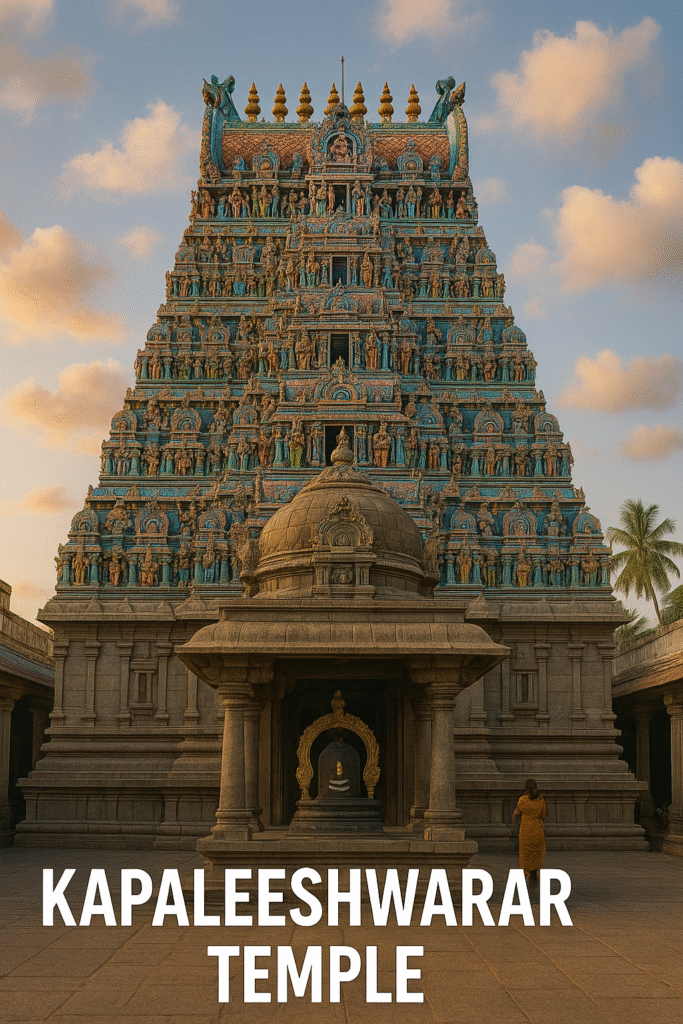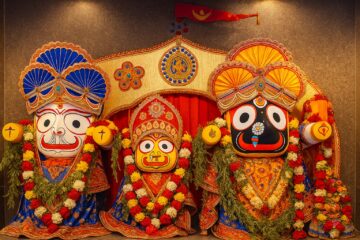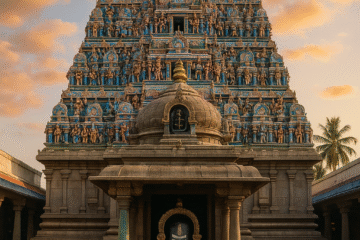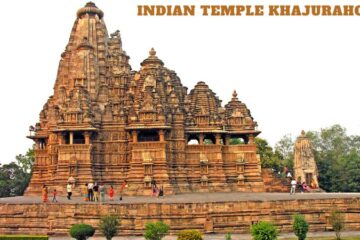
Located in the vibrant neighborhood of Mylapore, Kapaleeshwarar Temple stands as one of the most iconic and revered Hindu temples in Chennai, Tamil Nadu. Dedicated to Lord Shiva, who is worshipped here as Kapaleeshwarar, and his consort Parvati, known as Karpagambal, the temple is a living testimony of Dravidian temple architecture, ancient Tamil culture, and spiritual grandeur.
This temple is not just a place of worship but a magnificent cultural and historical symbol that draws devotees, tourists, historians, and architects from across the globe. With its towering gopurams (gateway towers), vibrant festivals, and profound spiritual aura, the Kapaleeshwarar Temple in Chennai embodies the timeless traditions of South India.
The Architectural Brilliance of Kapaleeshwarar Temple
The Kapaleeshwarar Temple is a splendid example of Dravidian architecture, believed to have been originally constructed in the 7th century CE by the Pallavas. However, the current structure is a later reconstruction by the Vijayanagar kings in the 16th century, as the original temple near the seashore was destroyed by Portuguese invaders.
Majestic Gopurams and Intricate Sculptures
The temple complex features two prominent gopurams – the eastern gopuram rising to about 40 meters and adorned with exquisitely painted sculptures of gods, goddesses, and mythological creatures. Every inch of the gopuram is decorated with vibrant images that narrate Hindu epics and legends, showcasing the artistic genius of ancient Tamil craftsmen.
Sacred Tank and Temple Layout
The temple includes a sacred tank (Pushkarini), believed to have healing powers and is integral to many temple rituals. The layout of the temple follows traditional Agama Shastra principles, with sanctums for various deities, mandapams (halls) supported by ornately carved pillars, and a large prakaram (outer courtyard) that hosts religious gatherings and festivals.
Legends and Myths Surrounding Kapaleeshwarar Temple
The Story of Kapaleeshwarar and Karpagambal
According to legend, Goddess Parvati, in the form of a peacock (mayil), worshipped Lord Shiva at this spot to atone for a curse. The name Mylapore is derived from “Mayil Arparikum Oor”, meaning “the land where the peacock danced.” In response to her devotion, Shiva appeared and blessed her, thus earning the deity the name Kapaleeshwarar, meaning “Lord of the Skull,” referencing the time when Shiva carried Brahma’s fifth head.
Other Associated Deities and Legends
Besides Kapaleeshwarar and Karpagambal, the temple also houses shrines of Murugan, Vinayaka, Dakshinamurthy, Durga, and Navagrahas, each accompanied by mythological lore. The Punnai Tree (Sthala Vriksha) inside the temple courtyard is considered sacred, as Parvati is believed to have worshipped under it.
Spiritual Significance and Ritual Practices
The Kapaleeshwarar Temple plays a vital role in the spiritual life of Chennai. Daily pujas (worship rituals) are conducted with great sanctity, drawing hundreds of devotees. The temple follows Saivite customs and Agama traditions, offering six pujas a day.
Important Rituals and Offerings
Kala Sandhi Pooja (Morning)
Uchikala Pooja (Midday)
Sayaraksha Pooja (Evening)
Arthajama Pooja (Night)
Special Abhishekam (ritual bathing), Alankaram (decorations), Deepa Aradhana (lamp offerings), and Naivedyam (food offerings) are performed during these sessions. Annadanam (free food distribution) is regularly held for devotees.
Festivals Celebrated at Kapaleeshwarar Temple
Panguni Peruvizha – The Grand Annual Festival
The Panguni Peruvizha, celebrated during the Tamil month of Panguni (March-April), is the most important festival here. The highlight is the Arupathimoovar Festival, where the 63 Nayanmars (Shaivite saints) are honored with a grand procession. The Therotsavam (Car Festival) features beautifully decorated wooden chariots pulled through Mylapore’s streets by thousands of devotees.
Other Celebrated Festivals
Navaratri – Honoring Goddess Karpagambal with music, dance, and decorations.
Vinayaka Chaturthi – Special rituals for Lord Ganesha.
Skanda Sashti – Celebrating Lord Murugan’s victory over evil.
Maha Shivaratri – Night-long worship of Lord Shiva.
Margazhi Tiruvizha – A month of devotion marked by early morning bhajans and kolam art.
These festivals attract massive crowds and are a treat for spiritual seekers, photographers, and culture lovers alike.
Kapaleeshwarar Temple as a Cultural Hub
A Center for Carnatic Music and Tamil Heritage
Kapaleeshwarar Temple is deeply interwoven with Tamil culture, especially Carnatic music and Bharatanatyam dance. Renowned musicians often perform during festivals, and classical dance events are held in the temple precincts. The Mylapore Fine Arts Club, in close proximity, further promotes these classical traditions, keeping the spiritual and cultural vibrancy alive.
Art, Literature, and Spiritual Dialogues
The temple has inspired numerous Tamil devotional poems (Thevarams) composed by saints like Appar, Sundarar, and Sambandar. It continues to be a site for spiritual discourses, Vedic chanting, and cultural seminars, enriching the minds and hearts of its visitors.
Visitor Information: Timings, Entry, and Travel Tips
Kapaleeshwarar Temple Timings
Morning: 5:30 AM – 12:00 PM
Evening: 4:00 PM – 9:00 PM
No entry fee is charged.
Best Time to Visit
The temple can be visited year-round, but the months between November and March offer pleasant weather. The Panguni festival period is a must-see for those wishing to witness its spiritual grandeur.
Dress Code and Etiquette
Visitors are expected to wear modest, traditional attire. Footwear must be removed before entering the temple. Photography is restricted inside the sanctum but allowed in outer courtyards.
Nearby Attractions to Explore in Mylapore
While visiting Kapaleeshwarar Temple, one can also explore nearby cultural and religious landmarks:
Santhome Basilica – A Gothic-style Roman Catholic church.
Ramakrishna Math – A peaceful spiritual retreat and bookstore.
Luz Church – One of the oldest churches in Chennai.
Mylapore Tank and Streets – Great for local shopping and street food.
These attractions provide a holistic experience of Chennai’s multi-religious harmony and rich heritage.
How to Reach Kapaleeshwarar Temple?
By Air
Chennai International Airport is around 16 km away. Taxis and app-based cabs are readily available.
By Train
Chennai Central and Egmore stations are the nearest major railheads. Mylapore MRTS station is the closest local railway station.
By Road
Public buses, autos, and cabs make Mylapore highly accessible from all parts of Chennai.
Conclusion: A Timeless Treasure of Tamil Nadu
The Kapaleeshwarar Temple is not just a religious monument; it is the heartbeat of Chennai’s cultural, historical, and spiritual identity. Whether you seek divine blessings, architectural inspiration, or cultural immersion, this sacred shrine offers a profound journey into the soul of South India.


